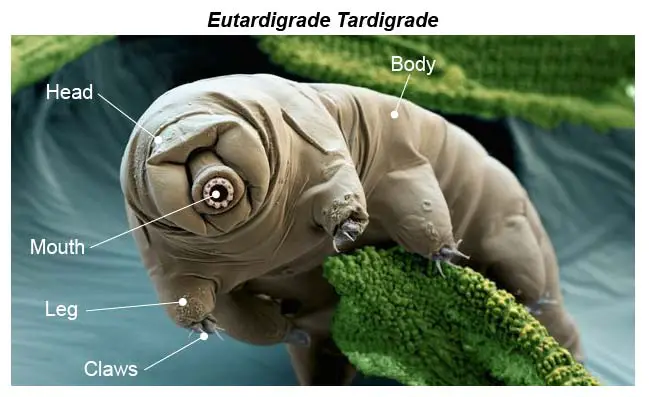Tardigrades Genes for Innovation | 07 Nov 2024
Why in News?
Recently, researchers are exploring a range of unique tardigrade features to inspire advancements in medicine, biotechnology, and space exploration.
What are the Key Facts About Tardigrades?
- About: Tardigrades (Tardigrada), also known as water bears or moss piglets, are microscopic, eight-legged creatures without a backbone.
- Species and Evolution: They belong to the phylum Tardigrada.
- The earliest known fossils date from around 90 million years ago, in the Cretaceous Period (145 - 66 million years ago).
- Molecular dating suggests they originated at least 600 million years ago.
- Adaptations: Tardigrades are known for their ability to withstand extreme radiation, starvation, lack of oxygen and water, and subzero temperatures.
- They can inhabit extreme ecosystems like the Arctic, deep-sea floors, deserts, and even the vacuum of space.
- Cryptobiosis: Tardigrades can enter cryptobiosis, halting biological activity to survive extreme conditions like dehydration, freezing, and radiation damage.
- The DODA1 gene helps synthesise betalains, a type of antioxidants that likely protect cells from radiation damage and allows them to recover and resume normal activities afterward.
How Tardigrade Properties Could be Applied for Human Use?
- Intrinsically Disordered Proteins (IDPs): Secretory-abundant heat-soluble IDPs synthesised in microbes improve desiccation (completely drying up) tolerance, potentially enabling resilient microbes and organisms.
- Small Heat Shock Proteins: When cloned into microbes, these proteins can improve microbial survival and stability in hot or dry environments.
- Protein Stability: Tardigrades’ ability to stabilise their proteins in extreme environments could be used to improve the shelf life and effectiveness of vaccines, antibodies, and enzymes used in medicine.
- Cell Preservation: Tardigrades' mechanisms to resist cellular damage could be used for cell therapies, aiding in transport and storage, and ultimately improving treatment delivery.
- Researchers may develop enhanced protective measures for humans and materials in outer space.

